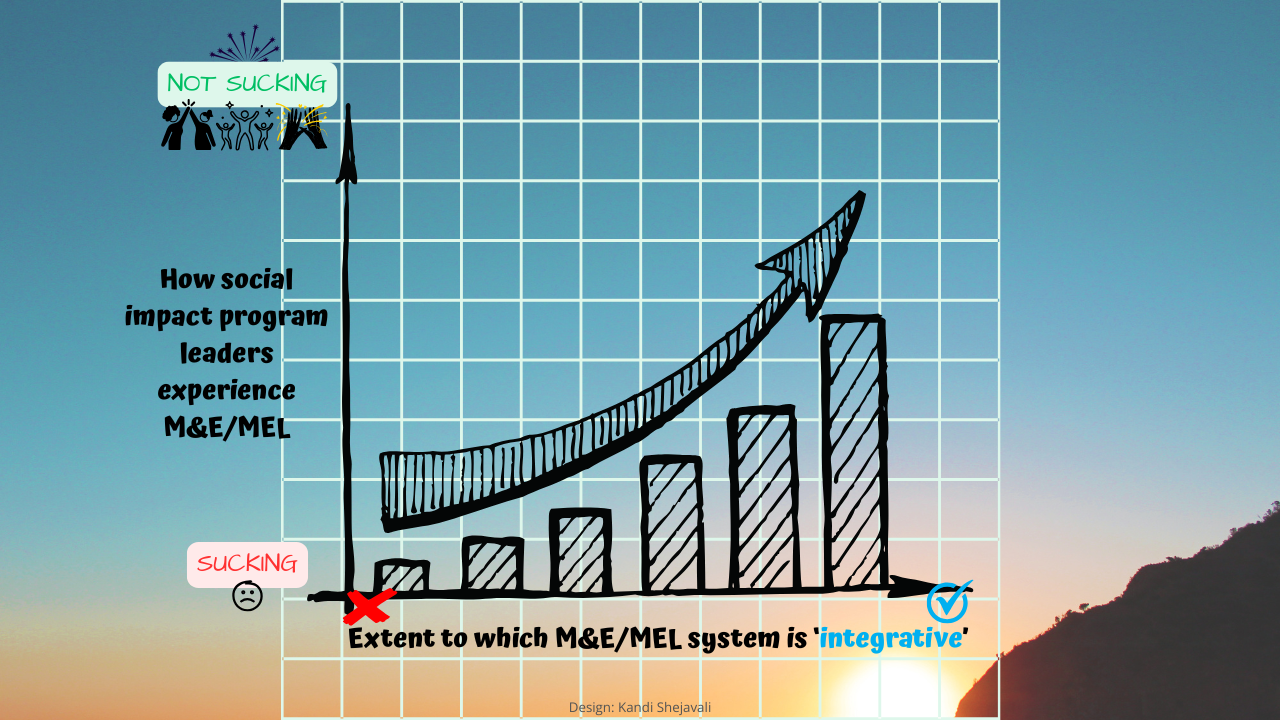3 M&E rules I never break
Sep 27, 2021
The mountain of ‘should dos’ in M&E is ginormous…
Anyone who has been exposed to M&E has likely gotten a taste of the number of standards, best practices, and must-dos that exist in the field. This is the case even though most of these guidelines can be boiled down into a few essential principles.
With all the rules to consider, plus the immediate realities of implementation that favor practicality over theoretical ideals, it is near-impossible to not break some M&E ‘rules’, which I do definitely sometimes.
But some rules are meant to be obeyed, no matter what. If certain M&E rules are not followed scrupulously, the system for measuring, managing, and maximizing a project’s results – which is what M&E is all about – will be on shaky ground.
[RESOURCE: If you could use a short introductory guide to M&E fundamentals, download the Basics of M&E: A cheat sheet for beginners.]
Here are three M&E rules that I absolutely keep.
1. The theory of change must always be at the core of the M&E system
I have said it before, but I will say it again: ‘the ToC should…form the basis for the system that measures and analyses whether or not a program’s results have been attained.’ (Shejavali, 2021).
Conducting M&E without keeping the ToC at the core is a recipe for disaster.
Why?
Because without knowing what the project does and why it does it, there is no M&E – i.e., results measurement and management, and maximization of positive results – or at least no effective M&E.
And, at least for now, the ToC is the most useful tool in the M&E toolkit that tells us, in summary form, what the project does and to what end. If done well, it ‘maps out what an intervention will do to produce certain outputs that will lead to certain outcomes (though often not directly) that ultimately contribute to the desired impacts (again, often not directly) in relation to the problem identified at the outset’ (ibid).
This clarity on the objectives of the project that the ToC provides makes its inclusion at the core of the M&E system non-negotiable.
2. The objectives of the M&E system must be clearly articulated
Managing expectations well is an essential life skill. That is no less the case when it comes to conducting M&E. One helpful way to do manage expectations in M&E is to always lay out the objectives of the M&E system explicitly.
People have different understandings of what an M&E system can deliver, and those expectations often go unsaid, with everyone assuming that everyone else is all on the same page as they are. But unspoken demands can lead to disappointment and frustration down the line when the M&E system does not generate the data that one person or another thought it would.
Typically, M&E systems are set up for at least the following purposes:
- accountability;
- project management; and
- learning.
I tend to lump the two latter objectives together because, in my view, managing the project properly necessarily involves learning – and not just learning of course, but improving, i.e., making implementation and other management decisions based on those lessons learned.
With project management and learning lumped together, I then typically add another objective for the M&E system:
- to support the telling of a credible results story (i.e., project communications).
The details of these, and additional if needed, objectives should be further articulated in the project’s measurement framework.
This explicit documentation of the M&E system’s objectives helps keep everyone on the same page about what can and what cannot be expected from the system and helps it remain focused on its purpose and thus deliver better.
3. Indicators really do need to be fully documented
If I had ever started counting the number of project results frameworks that I have come across that do not fully document their indicators, I would have lost count by now. Maybe I would have even run out of numbers. Okay, not run out of numbers but definitely lost count.
Properly documenting indicators matters because doing so helps assure data quality. Data quality matters if the M&E system is to provide credible information about the project’s results. And without credible information about the project’s results, the project’s positive impact (and, ultimately, our dream for a better world) cannot be fully realized and appreciated.
(Of course before we even get to fully documenting indicators, we must first assure that the indicators are the appropriate ones in the first place and that they are correctly formulated – both of which are huge topics in their own right.)
But what does ‘fully documenting’ indicators mean? The elements that I consider critical to document are detailed in this article.
Summary
Here is the summary rundown of the M&E rules that I keep, no matter what:
- Place the ToC at the core of the M&E system.
- Clearly articulate the objectives of the M&E system.
- Fully document indicators.
Over to you!
PRACTICAL TIP #1: If you work on a social impact project, take a look at your project’s M&E system and assess the extent to which it follows the above M&E ‘rules’. Are the above M&E ‘rules’ non-negotiable for your project, too, or do you bend one (or more) of them sometimes? Document your findings.
PRACTICAL TIP #2: If you think it would be helpful, share and discuss your findings with your project team to determine whether sticking more closely to these rules would help strengthen the project’s result measurement and management system and help maximize positive outcomes. Document one to three action steps that the team agrees would be useful to that end.
PRACTICAL TIP #3: Undertake the action steps that the project team agreed upon in tip #2 above and then report back to the project team to discuss their effectiveness.
Which other M&E ‘rules’ do you think must always be followed?
Please leave a reaction or a comment at the bottom of this article's summary on LinkedIn.
___
References:
Shejavali, K. (2021, April 13). Essential principles of an M&E system. LinkedIn Pulse. https://www.linkedin.com/pulse/essential-principles-me-system-kandi-shejavali





